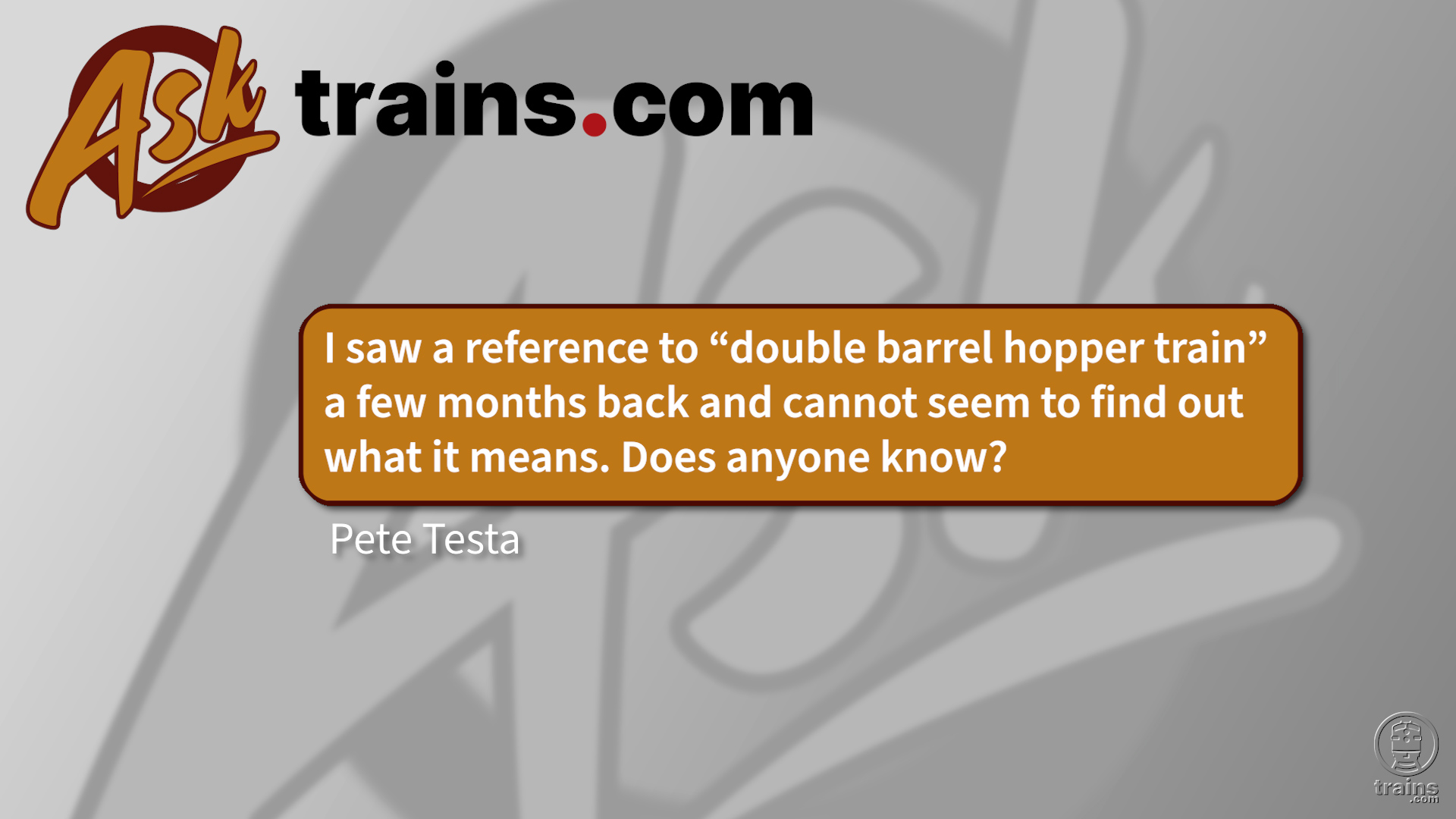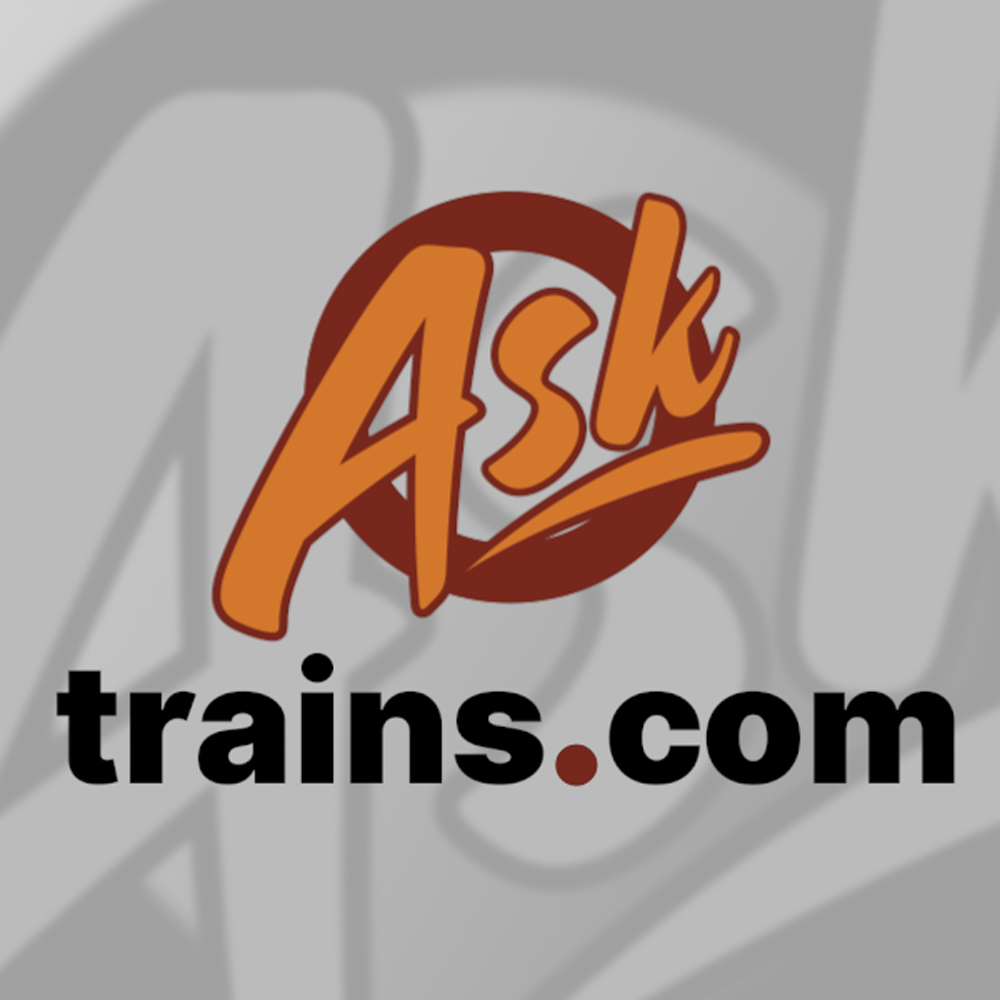– Howard Beard, New Port Richey, Fla.
A What you’re seeing is two sets of three hoses that are part of a train’s air-brake system, and more specifically, the airbrake system between locomotives. Each set of hoses passes three air pressures from locomotive to locomotive. Starting nearest the coupler, the main reservoir hose (MR) passes 130 pounds of air between all the main reservoirs in a consist (grouping) of engines, in effect creating one large air reservoir and distributing the demand for air among all the air compressors in a locomotive consist. Next, the actuating hose (ACT) is pressurized when an engineer “bails off,” or releases the brakes on all locomotives. When the engineer applies the train brake, also referred to as the “automatic,” the locomotives act like any car in the train and apply their brakes as well. The engineer can override this application by bailing off and releasing the brakes on the locomotives while maintaining the brake application on the rest of the train. Farthest from the coupler is the brake cylinder hose (BC or AP for application), which is pressurized according to the amount of braking effort the engineer applies on the locomotive brake, also referred to as the “independent.”
Engine crews usually connect only one set of these hoses between locomotives,
unless company policy or cold weather dictates otherwise, in which case both sets of hoses are connected.
The “hose” you refer to above the coupler is not a hose. Rather, it is an electrical
cable that allows multiple units to be operated from one control stand in one locomotive cab. It is called an “m.u. cable” or an “m.u. jumper,” and each end
has 27 individual connections inside the plug, as does the receptacle on a locomotive
(on Santa Fe 92, it is the light-colored cable, attached to the plug on the left, then draped over the coupler area to a holder on the frame walkway at the right). Each pin
among the 27 communicates a different operation of the locomotive in a multiple-unit consist, from forward or reverse direction to headlight control.
– Sayre C. Kos
– Brian J. Connolly, Madison, Wis.
A This practice is the result of an October 2005 Federal Railroad Administration emergency order regarding the operation of hand-throw switches in non-signaled territory. This followed an early-morning fatal accident in January 2005 on Norfolk Southern in Graniteville, S.C., in which a road freight was diverted into a parked local freight on a siding, through a switch that had not been properly realigned for the main track the evening before. The incident resulted in the deaths of 9 people and the evacuation of 5,000. Now, as part of their paperwork, train crews who operate hand-throw switches on the main track in non-signaled territory must fill out the Switch Position Awareness Form (SPAF). After throwing a switch, the employee who does so must inform the engineer by radio the location and position (normal or reverse) of the switch being operated. The engineer notes this on the SPAF, which is turned in at the end of his or her tour of duty.
– Sayre C. Kos
– Bob Hall, Winter Park, Fla.
A When a locomotive is in dynamic braking mode, the diesel engine is indeed idling. The effort actually comes from the traction motors inside the trucks of a locomotive. On the locomotive’s control stand, the dynamic braking handle often is separate from the throttle and reverser. When an engineer first goes into dynamic braking, a process not unlike slowing a car with compression
or downshifting, the engine goes to idle and the connection between the
main generator and the traction motors is broken. Dynamic braking doesn’t reverse the traction motors; rather, the process allows the motors to double as generators, which slows the locomotive wheels and, in effect, brakes the train. Since the wheels of a locomotive are still turning while no power is being applied, a lot of mechanical energy is present. In this process, mechanical energy turns into electrical energy and eventually heat energy, which is dissipated through the dynamic braking grids and exhaust fans.
– Sayre C. Kos











